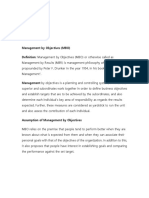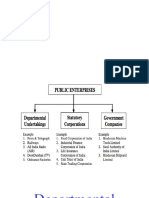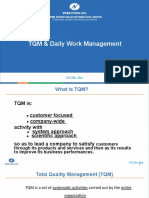0% found this document useful (0 votes)
271 views7 pagesMBO Greenwood-Drucker
1) Peter Drucker conceptualized management by objectives (MBO) in the late 1940s with the assistance of Harold Smiddy of General Electric.
2) Smiddy was already using the "manager's letter" concept which required managers to outline goals and plans for evaluation.
3) Drucker helped Smiddy develop this into a full MBO philosophy where objectives are jointly set by managers and subordinates rather than just handed down.
4) This philosophy formed the basis for GE's decentralized reorganization from 1951-1956 and marked the beginnings of MBO as it is understood today.
Uploaded by
Schipek-Labodics RékaCopyright
© © All Rights Reserved
We take content rights seriously. If you suspect this is your content, claim it here.
Available Formats
Download as PDF, TXT or read online on Scribd
0% found this document useful (0 votes)
271 views7 pagesMBO Greenwood-Drucker
1) Peter Drucker conceptualized management by objectives (MBO) in the late 1940s with the assistance of Harold Smiddy of General Electric.
2) Smiddy was already using the "manager's letter" concept which required managers to outline goals and plans for evaluation.
3) Drucker helped Smiddy develop this into a full MBO philosophy where objectives are jointly set by managers and subordinates rather than just handed down.
4) This philosophy formed the basis for GE's decentralized reorganization from 1951-1956 and marked the beginnings of MBO as it is understood today.
Uploaded by
Schipek-Labodics RékaCopyright
© © All Rights Reserved
We take content rights seriously. If you suspect this is your content, claim it here.
Available Formats
Download as PDF, TXT or read online on Scribd
/ 7

























































































